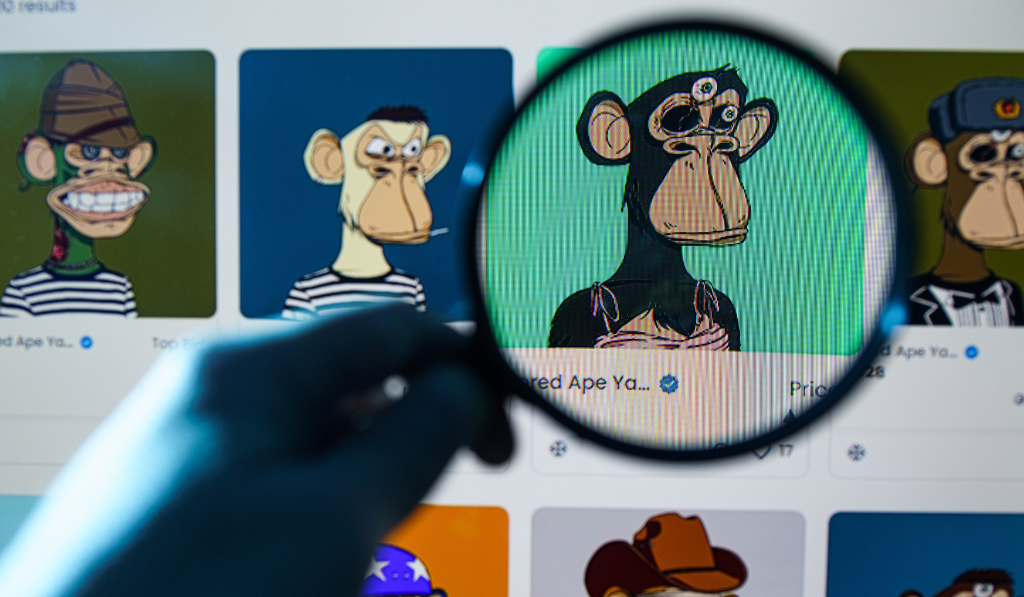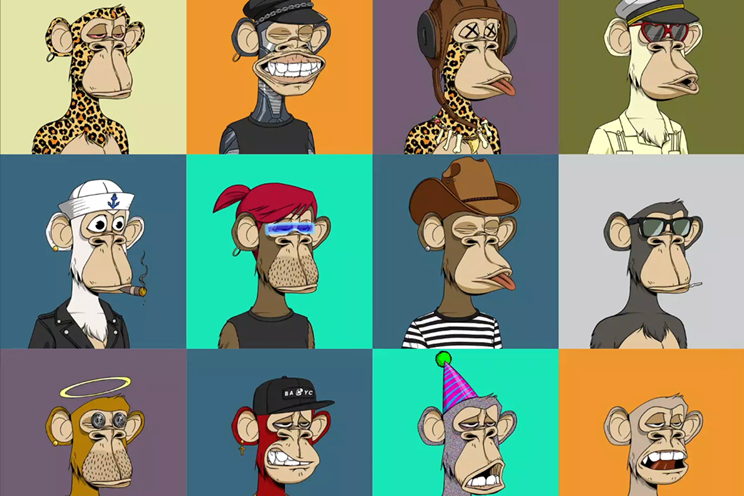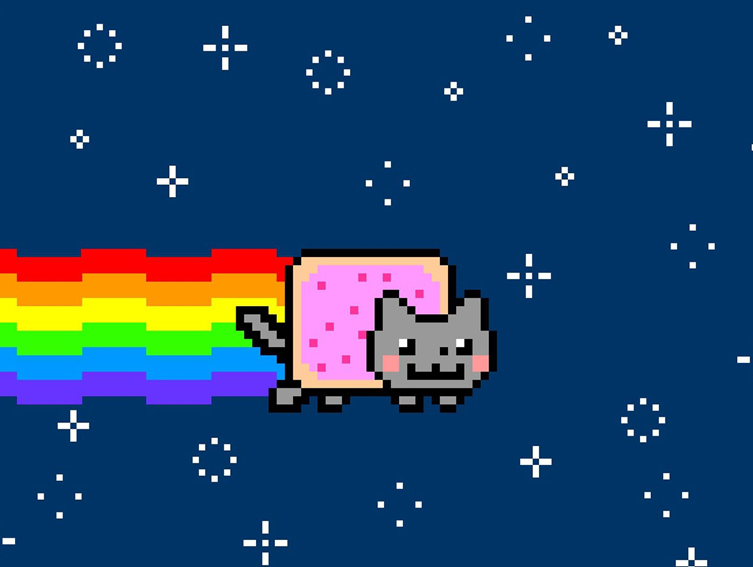Non-Fungible Tokens: A Digital Tool for Hospitality?

By Jason Chang, SHA ’22, Accounting Manager, Cambria Somerville
NFTs: What are they?
Whether for status, personal pleasure or knowledge, the collector’s mindset is seen in everyday life; sports cards, jewelry, and art are prime examples of items many people collect. While many tend to preserve their items long-term due to sentimental values, others collect with the intent to sell their collectibles and make money. A rare coin, Banksy’s “Balloon Girl,” and ancient antiques have all been sold for tremendous amounts of money; today it seems that this cycle of constant auctioning and purchasing has gone digital in the form of NFTs.
Known as “non-fungible tokens,” NFTs have embodied what digital collecting can become. Existing on the blockchain, usually on Ethereum, NFTs utilize the same technology as cryptocurrency to come to life (Conti). A blockchain is essentially a secure and decentralized digital database that records transactions (Hayes) and holds permanent records of previous and current owners of an asset. While currencies such as the American dollar and Bitcoin are “fungible,” meaning that one can be exchanged for another of equal value (one American dollar can be traded for another dollar; one Ethereum can be traded for another), NFTs contain distinct, digital signatures which exist on different blockchains that cause the trading of them to be impossible, hence the term “non-fungible” (Conti). These tokens are digital objects that can represent both the tangible and intangible, including:
- Graphic Art: Bored Ape Yacht Club digital monkey art collection
- GIFs: art rendition of Nyan Cat meme
- Tweets: Jack Dorsey’s first Tweet
- Music: Torey Lanez’ When It’s Dark album


Similar to the selling of physical art pieces, each NFT owner holds the authentic, original version of the digital asset (Rosen, NerdWallet). Copies are easily recognizable as they do not hold the records of the transfer of the assets in the unique blockchain.
NFT Marketing:
The potential for NFT marketing within any industry is promising, shown through the noteworthy selling prices of digital artworks. On leading NFT marketplaces such as OpenSea, $2.7 billion worth of Ethereum has already been generated (Bhattacharya, 2022), while the current market cap for NFTs is more than $10 billion.
Although marketing a creative, unique art piece is a challenge in itself, many benefits may result. Often, extraordinary brand experiences are what distinguish one company from another (Tas, 2022). NFTs allow a brand to present a different experience to consumers through collaborations with artists, content creators, and influencers. Furthermore, NFTs can be a visualization tool for a company, providing the image that a brand is interesting, exciting, and unforgettable (Tas, 2022).
Twitter is the go-to platform where NFTs can be properly marketed (Adityarup, 2022). NFT customers typically possess a Twitter account (Tas, 2022), while brands share their art collections and build communities utilizing a Twitter account. After a brand creates a teaser video to introduce an NFT collection, they typically join Twitter communities through hashtags and connect with passionate art lovers (Bhattacharya, 2022). Additionally, threads can begin on Twitter, which are a series of messages and conversations that are connected to each other. The purpose of the thread is to start an engaging, entertaining, and easy discussion between a customer and a brand to directly engage with their audience.
Although Twitter is the popular marketing avenue (Tas, 2022), these platforms are also essential to NFT marketing:
- Discord.com: A free voice, video, and text chat app that is used for tens of millions to talk and socialize with friends and communities (Discord.com)
- Reddit.com: A network of communities where people can share interests, hobbies, and passions. (Reddit.com)
- Quora.com: A question-and-answer website where people go to find information (Quora.com)
On Instagram, brands should utilize relevant hashtags to promote their NFT projects. Common hashtags that are used include #nftart, #nft, #nftartist, and #cryptoartist.
Pairing with influencers is a crucial part of marketing an NFT project, as data from MuseFind shows that 92% of consumers trust social media influencers rather than a brand itself (Raphael, 2019). Hence, partnering with specific NFT influencers enables a brand to capture the attention of its target audience (DigitalAgencyNetwork).
Emirates Airlines recently released news regarding a brand marketing campaign revolving around NFTs and Metaverse experiences. Their brand loyalty program, Skywards, has partnered with a blockchain firm, Loyyal, to put customer’s loyalty program information into a secured blockchain (Ledger Insights, 2022). This allows Emirates to develop a shared system where multiple parties gain access to the tracking history of passenger points. Furthermore, Emirates plans to use NFTs to digitally commercialize tickets as well as repurpose the Emirates Pavillon to center around attracting global talent (Ledger Insights, 2022).
NFT influencers are not the only ones who actively promote these digital art projects. In fact, generally popular influencers are involved in either promoting or purchasing NFTs (Varma, 2022). Gary Vaynerchuk (known on social media as GaryVee), a popular Internet personality and entrepreneur with nearly 10 million followers on Instagram, recently launched an NFT project called VeeFriends, an NFT project designed to promote the existence of NFTs in general.
It is also essential to ensure that an audience is aware that a brand’s NFT collection is being released (Bhattacharya, 2022). Therefore, publicizing a collection through platforms such as NFT Calendar is imperative. NFT Calendar shares the release dates of certain NFT events created by crypto-artists and brands. It is simple to add a drop to NFT Calendar. Certain details such as the title of the collection, cover image, and drop date and time are required as well as the specific marketplaces in which an NFT collection will drop, such as outlets including opensea.io and rarible.com.
The most important part of marketing an NFT collection is its actual listing. Once collections are complete and ready to be sold, a brand must list these collections on crypto-art marketplaces, including opensea.io, marketplace.axieinfinity.com, rarible.com, and superrare.com.
NFTs in Hospitality:
The hospitality industry has already capitalized on what NFTs can provide as seen through the efforts of multiple major hospitality brands:
- Marriott Bonvoy: released debut NFT collection on December 4th, 2021 through Miami Beach Art Basel (Adele, 2021)
- Taco Bell: issued taco-themed NFTs through GIFs and images on Rarible, which sold out in under 30 minutes (Clark, 2021)
- McDonald’s: created its first NFT through a representation of the McRib in honor of its 40th anniversary (Rosenblatt, 2021)
Hospitality companies currently collaborate with each other to create dynamic, eye-catching NFTs. Lost Hopium is an ideal example. This NFT project highly anticipates success and aims to bring the hospitality industry to the next level (Thompson, 2022). Presenting unique, “god-like” avatars as NFTs, Lost Hopium intends to bring the physical world to the virtual world through luxury hotels and exclusive access to certain accommodations. Owners of Lost Hopium NFTs, who are called “MetaGods,” have VIP access to clubs, lounges, and restaurants within the luxury segment (LostHopium.io). Globally, these MetaGods can participate in private, exclusive events both virtually and in person. Furthermore, owners also receive discounts and packages from luxurious hotels all over the world. Both Ritz-Carlton and Waldorf Astoria participate in this NFT project, while smaller hotels participate in their own NFT projects. Through NFTs, exclusivity can be offered to customers. Concurrently, hotels may be able to attract new audiences and provide an experience like none other while expanding their digital reach.
The unique and distinct trait of NFTs is that although they are currently, primarily available in the form of digital art, these tokens can actually represent anything from tweets to albums, and for the hospitality industry, bookings.
For the restaurant business, a common issue is “no-shows”; customers make a reservation with a restaurant, and for whatever reason, are unable to attend. For a restaurant, this is a significant source of lost revenue, as there may not have been enough time to market to a different customer.
If tables are “tokenized” (turned into NFTs), this problem can potentially be resolved. Since each token for a table will contain specific information regarding time, date, and number of people, each token would be distinct when sold. Certain tokens may be valued higher than others, depending on the location, area of restaurant, and circumstances (Thompson, 2022). Tokenizing these tables and selling them ensures that a restaurant receives revenue since the initial sale of a token guarantees the payment of cryptocurrency to the restaurant (Thompson, 2022). After the initial sale, it is up to the customer to manage the consequences of a no-show. Both parties benefit, as a restaurant may be able to earn even more income if a certain token is resold for a higher value. Meanwhile, the customer is able to sell their ticket if they are no longer able to attend. NFTs representing tables can be sold through images of a restaurant’s food, atmosphere or objects so that customers can also obtain unique receipts proving that they have eaten at a certain restaurant.
For hotels, NFTs are just as meaningful. The appearance of virtual reality and the Metaverse further enable hotels to utilize these tokens. Customers may be able to view a property and tour rooms prior to purchasing and attending through the Metaverse, which can attract more customers to a property. The booking receipt can act as the NFT and allows hotels to directly target customers rather than relying on OTAs (online travel agencies). As with restaurants, these bookings can be traded or swapped with other people, reducing the need for hotels to rebook cancellations (Thompson, 2022). In fact, hotels are ensured revenue upon initial sale of the NFT booking, and customers who may be unable to follow through will be incentivized to sell their booking for a higher price.
Although the concept of the NFT is relatively new in the digital world, it has implemented these tokens as a legitimate tool with which all industries can both market their brand image as well as reach new audiences. In the hospitality industry, NFTs and token bookings can prove a solution to many of the challenges that can occur, such as revenue management while providing a sense of exclusivity through both tangible and intangible offerings. As the NFT market grows rapidly, it is imperative that hotels and restaurants pay close attention to this digital weapon; joining the NFT market before the competition has a chance to do the same is one approach to showing customers that a brand is staying relevant.
References